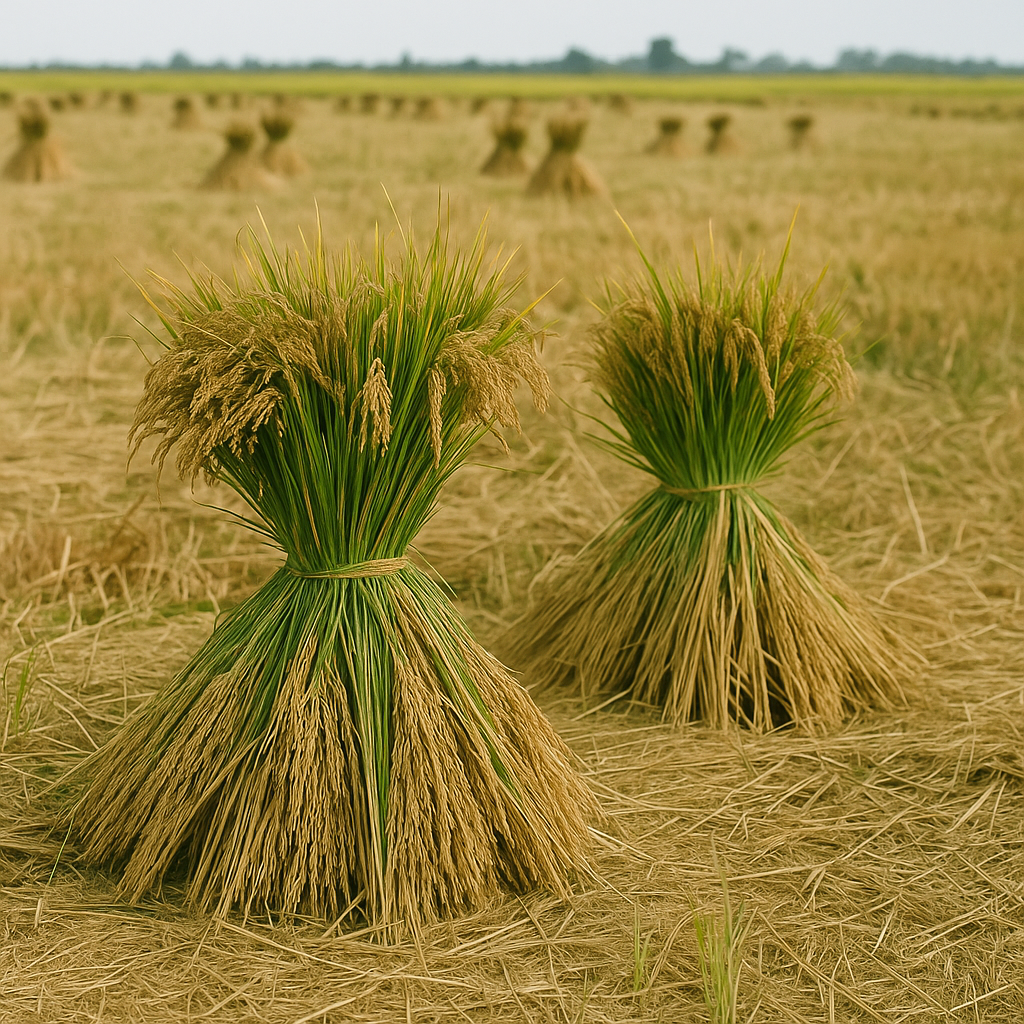July 2025: India’s Rice Export Market – Key Developments
Shipping - India | 08/07/2025, Tuesday
July 2025: India’s Rice Export Market – Key Developments
1. Unprecedented Export Volumes & Price Pressure
India is now pushing toward exporting a record 24 MMT of rice in the 2025‑26 marketing year—approximately 40% of global shipments—driven by bumper harvests and lifted export curbs.
However, abundant supply has suppressed global rice prices to multi‑year lows (around $390–405/ton), squeezing farmer margins domestically.
2. Surplus Stock & Ethanol Diversion
Following a historic crop of 146–151 MMT, India’s Food Corporation of India (FCI) holds ~59.5 MMT of rice—well above the July target of 13.5 MMT.
To manage this surplus, 5.2 MMT is being redirected to ethanol production—about 9% of global rice exports—to support the government’s 20% ethanol blending target.
3. Regulatory Shifts: Partial Ban on Non‑Basmati White Rice
On July 3, India reinstated an export ban on non‑basmati white rice, a large export category (~10 MMT/year), citing domestic retail price inflation (up ~3% monthly) and crop loss fears due to heavy monsoon rains.
This sudden ban may halve shipments from Asia’s top exporter, potentially pushing global rice prices upward amid tight supply .
4. Basmati Rice: Geopolitical Challenges
Indian basmati exporters face headwinds due to rising tensions in the Strait of Hormuz, pushing insurance premiums up ~20% and complicating payments from Iran—one of India’s biggest basmati buyers (~855 kt worth ₹6,374 Cr in 2024–25).
Pakistan is capitalizing through barter trade, and Indian exporters are exploring lower-margin markets to adapt.
5. State-Level Support & Infrastructure Boost
In Uttar Pradesh’s Pilibhit district, APEDA is establishing a Basmati Export Development Foundation (BEDF) centre for seed production, farmer training, and quality testing—aimed at enhancing exports to 100+ countries.
Meanwhile, Odisha’s government is preparing to launch foodgrain exports, including rice, backed by record grain output and enhanced logistics.
🔍 Market Implications & Outlook
-
Short-Term: Export ban on non-basmati white rice may tighten Indian shipments in the immediate term, likely triggering price upticks globally.
-
Medium-Term: The strategic diversion of surplus rice to ethanol helps alleviate storage strains and supports energy goals but may limit export availability.
-
Long-Term: Infrastructure investments and extension of export capacities (e.g., BEDF centres) position India to maintain its global leadership and diversify rice-based revenues.
What Stakeholders Should Do
|
Stakeholder |
Recommended Action |
|---|---|
|
Rice Exporters |
Monitor ban impact; diversify markets; adjust logistics amid insurance/inflation risks. |
|
Importers |
Lock in near-term shipments; prepare for price volatility due to bans. |
|
Farmers & Millers |
Utilize BEDF and training programs; leverage focus on basmati quality. |
|
Policymakers |
Ensure targeted export bans avoid market unpredictability; optimize surplus diversion strategies. |
Final Word
July 2025 marks a turning point in India’s rice export story. A surplus-driven surge in exports is meeting fresh headwinds from regulatory bans and geopolitical tensions. Yet, strategic infrastructure and policy responses could secure India’s long-term edge—if short-term disruptions are wisely managed.

